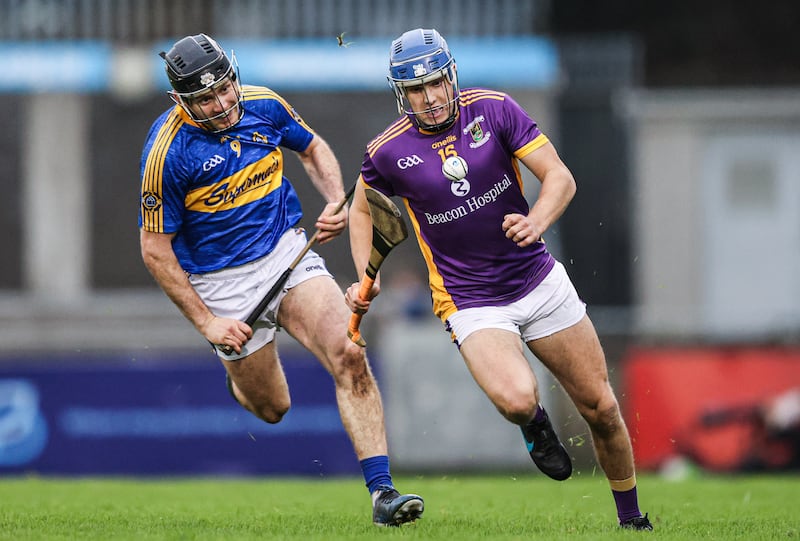The announcement that the award of best GAA pitch of the year had gone to Cork’s Páirc Uí Chaoimh came at a timely stage. That same week, the venue was about to host its first rugby match, between Munster and the touring South Africans.
Two days later it was hosting a Munster football quarter-final between Cork champions Nemo Rangers and Tipperary’s Clonmel Commercials. Nemo were hot favourites but their opponents put on an exhibition, taking full advantage of the excellent playing surface to showcase a combination of hard running and long kick passing.
Stephen Forrest, whose company Turftech is a long established adviser to Cork GAA, says that he had every confidence that the pitch would come through the test with flying colours.
“It goes back to the decision to go back to the drawing board and design a new surface specifically for Páirc Uí Chaoimh and its environs. Now they have a surface that’s fit for purpose all year around and has proved its value over and over again.
READ MORE
“It’s 100 per cent natural grass and heavy use will thin out the cover but the playability and stability of the ground is such that you can have great confidence in its performance.”
[ World Cup: How the GAA learned to cope with the biggest sports event on EarthOpens in new window ]
Cork GAA has also appointed a new Groundsman for Páirc Uí Chaoimh and Páirc Uí Rinn. Colm Daly was formerly deputy to Croke Park’s pitch manager Stuart Wilson and hadn’t been long appointed before the first rugby match at the venue.
According to Forrest, handling the demands of rugby and switching to a football match two days later required a lot of work immediately after the first match had ended.
“The nature of rugby, and especially rugby of that standard, [is that] there is huge pressure on certain aspects of the game. The main difference from a grounds keeping perspective is that you need to inspect areas of heavy pressure: scrums, lineouts on the five-metre line, heavily contested rucks. See what sort of ground disruption happened there and repair as quickly as possible.
“Colm Daly had a great operation in place. There were plenty of volunteers in place with forks to fix divots. We were well covered because the pitch didn’t cut up that much and there were plenty of people available.
“The main concern with two different codes is to do with markings, equipment and sponsors’ signage in the middle of the pitch. We had rugby posts in the middle of the field that had to be removed and the white lines marking out the different pitches had to be replaced.
“We all worked closely and the lines were removed straight after the game. The company that put down the logo was there to remove it once the game was finished. Colm had for instance organised paint that was more easily removed than standard paint. It was a well thought out and well resourced plan, which went very smoothly.”

Páirc Uí Chaoimh’s ability to take punishment was first seen during the winter championship two years ago when there was torrential rain in November. More recently, the Cork hurling final between St Finbarr’s and Blackrock would not have gone ahead in the vast majority of venue because of the downpour.
“The pitch was installed by SIS Pitches to a very high standard,” says Forrest. “It’s on a gravel raft which allows it to drain very freely.”
The ‘playability’ of pitches has become an important consideration for the GAA. In a time of unprecedentedly tight scheduling, fixture certainty is at a premium.
It convinced Leinster Council last year to stage its provincial club semi-finals and finals in Croke Park.
In what has been the latest demonstration of November’s recent status as Ireland’s rainy season, the durability of playing surfaces around the provinces has been remarkable.
It is also likely to be influencing the type of matches played. Clonmel were able to deploy their optimum game in Páirc Uí Chaoimh but that is seen to even greater effect in hurling.
[ Lengthy bans handed to two supporters after Parnell Park disorderOpens in new window ]
All-Ireland champions Ballygunner have thrived on new surfaces. A year ago they were emphatic winners of the Munster title in Cork and their most recent matches have been at home in Waterford’s Walsh Park – recently upgraded by golf course consultants and praised by the team’s manager Darragh O’Sullivan.
Last weekend, Limerick’s TUS Gaelic Grounds was in terrific condition for the Munster semi-final against Na Piarsaigh – at one stage a player was able to hop the ball off the surface when running; previously he might have had to go potholing to retrieve it.
On Sunday the Leinster hurling semi-finals will be at Croke Park.
“It guarantees the games go ahead,” according to provincial chair Pat Teehan. “In the split season it’s important to have that reassurance. The feedback is that people would like this to continue. This year, we’ve only had to rearrange one championship fixture.”















